For years, nonprofit “Saved in America” has branded itself as one answer to the growing problem of minors caught in the underground industry of sex trafficking.
Using former Navy SEALs and law enforcement volunteers, the organization’s flashy image has received national publicity and hundreds of thousands of dollars in donations.
But in the last three months, the organization has received a fair deal of criticism.
San Diego County recently announced Saved in America had been pulled off a $2 million project to run a safe house for sex trafficking victims. Then, Saved in America’s founder, Private Investigator Joseph Travers, was sued for fraud by an organization that at one time helped the group raise its money.
And now, NBC 7 Investigates has learned the state Attorney General’s office has been asked to investigate the group by San Diego County’s District Attorney.
Former Navy SEALs who volunteered for the charity say the nonprofit’s inner workings should be scrutinized and that the public should “look deeply” into Saved in America before donating money.
Questions surrounding Saved in America’s operations prompted NBC 7 Investigates to sit down with its founder and discuss the nonprofit’s mission, rescue claims and use of funds raised for finding missing and exploited children.
“It’s like a fight against the clock,” Travers said, sitting in Saved in America’s mobile command center. “We want to catch the runaway [child] before the trafficker gets the runaway.”
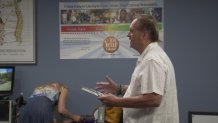
Travers says he runs his organization with former law enforcement, Navy SEALs, and other volunteers who dedicate hours of their time to surveillance and locating missing or runaway children, in addition to their day jobs.
Local
Former Navy SEAL Daniel Shomo started volunteering his time with Saved In America back in 2015.
“I think the last thing I'd want to know is that my daughter is being trafficked,” Shomo said.
Shomo is a former member of SEAL Team 5 where he served for eight years. During that time, he was deployed to the Middle East and Southeast Asia.
At first, Shomo says he thought Saved in America’s work was a noble cause. But over time, his impression of Travers and Saved in America’s mission to “rescue victims of sex trafficking” began to change.
“They were basically using the [Navy] SEAL and police image for fundraising,” Shomo said. “As soon as the media left [a rescue attempt], the mission was shut down and we went home...Even if we got leads [on potential victims.]”
After working with Saved in America for three years, Shomo quit. He felt concerned that the organization was more about the show than the rescue mission he signed up for.
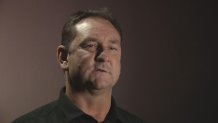
Since he left, Shomo says he has repeatedly asked Saved In America to remove his photos from the group’s promotions and website. He says their answer has always been no.
Rescues vs Recoveries
Several people who spoke with NBC 7 Investigates about Saved in America’s operations had concerns about whether the group had exaggerated the number of children it has helped and that those exaggerated figures have led to big donor dollars.
On Saved in America’s tax filings, website and Facebook posts for fundraisers, the group says it, “rescues children from traffickers,” and returns “them safely to their families.”
But Shomo says that’s not accurate.
“I was on about eight missions with Saved in America during my time. Only one of them, I think, was a sex trafficking victim,” Shomo said. “It's not as sexy to say we're going after runaways as we're going after sex trafficked girls right now.”
“I am not finding a lot of people who can say, ‘Yes, my daughter was sexually trafficked,’ and, ‘Yes, Saved in America found them,’” says Private Investigator Chris Reynolds.
Reynolds has been a private investigator for 39 years and says he and Travers have had a contentious past.
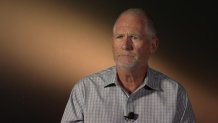
In September, Reynolds published a lengthy report on Joseph Travers and Saved in America -- including allegations the group inflated rescue figures to attract donors.
Travers would not answer any questions about the claims, citing a pending lawsuit he has filed against Reynolds for defamation.
Responding to NBC 7’s requests for exact details on the group’s rescue figures, Travers clarifies his organization does not “rescue” children, rather they only assist in “recoveries.”
“The only person who physically rescues a child is law enforcement,” Travers said. “The idea of Saved in America is to fill that gap for law enforcement so we could start working the case for the parent to try to recover the child before the trafficker does.”
Taking more of a preventative approach, Travers explains his all-volunteer team looks for victims of trafficking but most often potential victims -- like runaways.
“In the first 48 hours, 60 percent of all missing and runaway children will be approached by a trafficker. And it takes 10 to 14 days for a detective to get the information to start investigating. What’s wrong with this picture?” Travers said. “You're never going to get the kid before the trafficker.”
Thousands of Dollars in Donations
“The cost is roughly around $5,800 to $6,000 [per rescued] child," Travers told a packed room in Cardiff, explaining how his organization locates “missing and exploited children.” Travers was asked to speak about Saved in America’s work in a forum about the growing industry of human trafficking on Oct. 22.
There, he explained that the costs for his nonprofit to operate are increasing, in order to cover gas, lodging, meals and a mandated per diem rate for his team of volunteers. While costs have increased, so have the number of children allegedly saved by Travers and his team.
“We've assisted law enforcement and parents in the recovery of now 233 children,” Travers told the audience.
While understanding the names of recovered children would remain private, NBC 7 Investigates asked Travers for a list of dates and law enforcement agencies the group has worked with for each and every recovery since 2014. Travers did not provide a list, but instead pointed to binders of profiles he says proves his team’s work.
“[Saved in America] is really making a big difference,” Travers said. “We have some recoveries that [cost] $200, but we had some that have [cost] $10,000.”
NBC 7 asked Travers and his attorneys for a breakdown of costs per rescue but were not provided the data.
In its 2016 tax filing, the “National Christian Information Center” which Saved in America does business under, reported it spent $71,688 to rescue 22 children. The next year, it spent the same amount rescuing 32 children. The organization’s tax filings for 2018 are not available. Travers told NBC 7 that the bookkeeper asked for an extension to file.
On Saved in America’s website, a chart laying out the group’s rescue statistics states it has rescued, on average, five children a month since 2015.

In 2017, the chart on Saved in America’s website shows a spike in the number of children rescued. NBC 7 confirmed that was the year the volunteer organization landed a paid security contract with Casa de Amparo, a group home for abused or exploited teenage girls in San Marcos.
The home said Saved in America was hired to “shadow residents,” and to prevent pimps from luring minor victims outside of the facility, where they were known to hang around, according to the organization’s Executive Director Tamara Fleck-Myers. Fleck-Myers has made an appearance in videos praising Saved in America’s work.
“Prior to [having Saved in America,] we were having issues [at Casa De Amparo] with pimps [and] traffickers trying to lure our vulnerable foster youth off site...We believe that the abusers figured out that if we house, clothe and feed our girls, they can just come and take them on the weekends. Sick, right? We just could not watch this happen any longer and employed the services of SIA,” Fleck-Myers said.
Casa De Amparo is not a locked facility so the girls can come and go. Shomo said Saved in America took advantage of that.
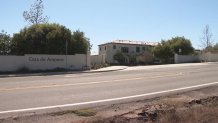
“I found out that Joseph [Travers] was counting the girls....at Casa de Amparo as recoveries,” Shomo said. “When I confronted [Travers] on it, he said there are two types of recoveries. There were personal recoveries and institutional recoveries [like Casa de Amparo.]”
Another former Navy SEAL and Saved in America volunteer told NBC 7 the same girl could be counted as a rescue again and again, every time she left and returned to the facility. The SEAL would not agree to have his name published out of fear of Travers, but confirmed many details about the nonprofit.
Travers confirmed Saved in America did this, and says they had every right to count the girls more than once given the number of volunteers and surveillance hours dedicated to monitoring the Casa de Amparo residents.
“This is the way we do an investigation,” Travers says. “We were doing surveillance and we would let the staff know where the child is so they can come and take the child back.”
“What if that was your daughter? If that was your fourteen, twelve, eleven-year-old? And she was a victim and she was in this facility, and California law says you can't lock them down. Would you want Saved in America out there, doing surveillance, to be the eyes and ears for the staff and police?” Travers said.
Concerns about Saved in America’s contract with Casa De Amparo were raised with the California Department of Human Services Licensing Division, the state’s licensing arm for group homes.
Records obtained by NBC 7 Investigates shows some of the division’s concerns included Saved in America’s volunteers being armed while they were patrolling Casa De Amparo, potentially putting the youth in a dangerous situation. Regulators were also concerned about the disclosure of confidential information about the girls housed at the facility and how Saved in America’s team members would interact with residents outside the facility.
“Although I applaud [Casa de Amparo]’s thinking outside of the box, I think this plan could be very problematic,” Licensing Program Manager Shelly Grace wrote in an email.
NBC 7 asked Travers whether his operators carried weapons while on patrol at Casa De Amparo and he said the team members left their weapons inside their vehicles.
In addition to the contract with Casa De Amparo, Saved in America has raised large donations from gala fundraisers in La Jolla and Las Vegas. For years, fundraisers were organized by the Lynch Foundation but in 2019, both organizations cut ties.
In October, the Lynch Foundation filed a lawsuit against Travers including allegations of fraud and mishandling of tens of thousands of dollars from a designated trust.
NBC 7 asked Travers and his attorneys questions about the lawsuit and they would only say that they are investigating Lynch’s role as a trustee.
Saved in America also receives funding from taxpayers.
Last month, NBC 7 reported taxpayers, through County Supervisors Gaspar, Horn, Ron Roberts, and Greg Cox, contributed more than $240,000 for an RV used by Saved in America. The RV included a custom $10,000 paint job with Saved in America’s branding on the side, according to its grant application.
Travers would only meet NBC 7 at the RV or “mobile command center” parked off of Miramar road and said the RV-investment has been used sparingly so far.
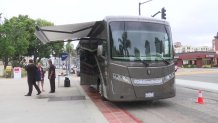
“We use it for press and public relations,” Travers said, adding, “There's a nice safe place for the [parents of missing or runaway children] to be instead of the parents staying at a coffeehouse.”
Fellow volunteer Shomo and other Saved in America volunteers told NBC 7 they felt the RV was a waste of money.
“He wanted to have a mobile command unit, as police forces do when they do big operations. I was against it,” Shomo said, adding that other team members agreed with him. “We were supposed to be undercover. We're supposed to be quiet. We're supposed to be silent. And here we have a 40-foot bus with ‘Saved in America’ written on the side of it.”
One Navy SEAL told NBC 7 he has never seen the RV out for an operation in the San Diego region.
Travers said it has only been used sparingly.
“We've used it, based here in this [Miramar] parking lot a few times,” Travers said.
Travers also explained that his team drove the RV to Nevada twice, once for a rescue and another time for promoting Saved in America, and it ended up costing $12,000 for each trip.
NBC7 Investigates obtained a letter from the San Diego County District Attorney’s office stating they have forwarded the Reynolds report and other information to the California Attorney General's office charity division for a possible investigation of Saved in America.
Travers defends his organization, saying he has done nothing wrong.
“This is my mission,” Travers said. “I feel good [that] I'm going where God wants me to go.”



